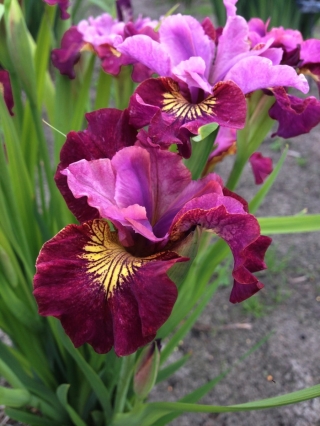- US Dollars ($)
- Euro (€)
- GB Pound (£)
- Chinese Yuan (元)
- Swedish krona (kr)
- Russian ruble (₽)
- Hong Kong dollar (HK$)
- Norwegian krone (kr)
- Indian rupee (₹)
- New Taiwan dollar (NT$)
- Danish krone (kr)
- Hungarian forint (Ft)
- Saudi riyal (SR)
- Bulgarian lev (лв)
- Czech koruna (Kč)
- Israeli shekel (₪)
- Indonesian rupiah (Rp)
- Japanese yen (¥)
- Korean won (₩)
- Malaysian ringgit (RM)
- Romanian leu (leu)
- Swiss franc (Fr.)
- Serbian dinar (din)
- Vietnamese đồng (₫)
- Ukrainian hryvnia (₴)
- Turkish lira (₺)
- Thai baht (฿)
- CAD Dollars ($)
- English
- German - Deutsch
- French - Français
- Spanish - Español
- Italian - Italiano
- Swedish - Svenska
- Norwegian - Norsk
- Danish - Dansk
- Nederlands
- Estonian - Eesti keel
- Finnish - Suomalainen
- Hungarian - Magyar
- Latvian - Latviešu valoda
- Lithuanian - Lietuvių
- Portuguese - Português
- Bulgarian - български
- Czech - Čeština
- Croatian - Hrvatski
- Romanian - Română
- Slovak - Slovák
- Slovenian - Slovenščina
- Categories
-
Seeds
-
Vegetable Seeds
-
Flower Seeds
-
- Datura seeds
- Dianthus, Carnation seeds
- Echinacea, Coneflower seeds
- Flower seed mixtures
- Forget me not seeds
- Foxglove seeds
- Geranium, Pelargonium seeds
- Gourd, Ornamental squash seeds
- Gypsophila, Baby's Breath seeds
- Hollyhock seeds
- Impatiens seeds
- Ipomoea, Morning glory seeds
- Calabash, Bottle Gourd seeds
- Herb Seeds
- Sprouting Seeds
-
Flower Bulbs
-
Garden Equipment
-
At home
- Around home
-
Fertilizers
-
- All-purpose fertilizers
- Autumn and winter fertilizers
- Blueberry fertilizers
- Boxwood fertilizers
- Bulb plants' fertilizers
- Grass and lawn fertilizers
- Citrus plant fertilizers
- Compost
- Conifer fertilizers
- Dolomite and lime fertilizers
- Dry powder fertilizers
- Fertilizers for balcony and terrace plants
- Fertilizers for moss-infected lawns
- Fertilizers in pump sprayers
-
- Fertilizers in watering cans
- Fertilizers sticks
- Fertilizers with leaf shine
- Flowering plant fertilizers
- Fruit fertilizers
- Fruit tree fertilizers
- Garden plant fertilizers
- Gel fertilizers
- Geranium fertilizers
- Green plant fertilizers
- Herb fertilizers
- Home plant fertilizers
- Hydrangea fertilizers
- Lavender fertilizers
-
The Miss Apple Siberian iris is a young variety that dazzles with its flowers. These stand out with their unique colours. Every tricolour bloom consists of light purple top petals and burgundy bottom petals that are adorned with an intricate gold pattern. The velvety surface of the flowers adds to the depth and character of the colours. The Miss Apple Siberian iris comes with a royal charm that is hard to resist. Out of the flowering period this plant adorns the area with a dense tuft of narrow leaves. Presented species of iris is a plant for wet spots. It looks great at the water or as a part of natural and meadow-like plantings. Siberian irises are well suited for growing on perennial borders and frequently watered lawns. These gracious plants create fairy-tale, uniquely coloured landscapes when planted in large groups.
Siberian iris does not pose any problems in cultivation and develops best on moist, fertile, humous, and slightly acidic sites. It definitely prefers sunny situations and partial shade to shaded areas. It belongs to hardy perennials that seldom fall to diseases. Iris sites must be cleaned of dried leaves at the start of the season. You should transplant and part them every few years. Iris rhizomes should be planted in spring or autumn. Bury them vertically close to the surface.
Indicated price is valid for 1 first choice rhizome of the presented variety of the Siberian iris. The bag with the rhizome is equipped with a label that contains basic plant facts and growing instructions.
- Variety: Miss Apple
- Use: ornamental - garden
- Growth form: erect
- Flower colour: burgundy-purple with gold markings
- Vegetation form: perennial
- Foliage: narrow
- Site: sunny or partial shade; moist, fertile, humous, slightly acidic soil
- Bulbs: 1
- Planting period: spring or autumn
- Wintering in the ground: yes
New



My account
Store
Customer information
Information

© -2024 Gardenseedsmarket.




